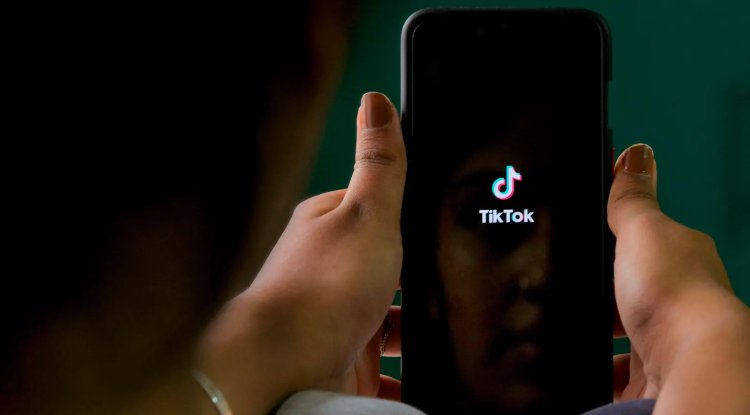Alabama Supreme Court Embryo Ruling Fertility Treatments impact
Impact of Alabama Supreme Court's Embryo Ruling on Fertility Treatments

"Navigating the New Terrain: Fertility Treatments in the Wake of Alabama's Embryo Ruling"
-
Introduction
- Overview of the Alabama Supreme Court's ruling on frozen embryos
- Immediate impact on fertility treatments and patients
-
The Heart of the Matter: Alabama's Supreme Court Decision
- Detailed explanation of the ruling
- Legal implications for embryos as "unborn life"
-
Immediate Reactions: The Medical Community's Response
- The University of Alabama at Birmingham's pause on IVF treatments
- Concerns among medical professionals statewide
-
The IVF Process Under Scrutiny
- Overview of the in vitro fertilization (IVF) process
- Challenges posed by the new legal landscape
-
Patients' Dilemma: The Human Cost of Legal Changes
- Personal stories from affected individuals
- The emotional and financial toll on families seeking fertility treatments
-
A Closer Look at IVF and Embryo Freezing
- The science behind egg retrieval and fertilization
- The importance of embryo freezing in fertility treatments
-
Legal Perspectives: Implications of Treating Embryos as Children
- Expert legal analysis on the ruling's broader implications
- Comparison with legal standards in other jurisdictions
-
Statewide Confusion: Medical Professionals in Limbo
- Testimonies from fertility clinics and physicians
- The dilemma of adhering to standard care versus legal risk
-
Potential Risks and Costs: The Burden on Women
- How the ruling may affect the safety, cost, and accessibility of IVF treatments
- The physical and psychological impact on prospective mothers
-
Comparative Analysis: IVF Policies in Conservative States
- Potential for similar rulings in other conservative states
- The ripple effect on regional access to fertility treatments
-
Global Context: Fertility Treatment Laws Around the World
- How Alabama's approach compares with international practices
- Lessons and warnings from global IVF regulation
-
Community Voices: Opinions from Healthcare Professionals and Patients
- A collection of viewpoints on the ruling's impact
- The debate within the fertility treatment community
-
Legal Challenges and Future Battles
- Ongoing and potential legal challenges to the ruling
- The future of fertility law in Alabama and beyond
-
Navigating Fertility Treatments: Advice for Patients
- Expert advice on seeking fertility treatments under the new legal framework
- Resources and support for affected individuals
-
The Role of Advocacy and Policy Change
- How advocacy groups are responding to the ruling
- Efforts to influence policy and protect access to fertility treatments
-
Technological Innovations in Fertility Treatments
- Emerging technologies and their potential to navigate legal challenges
- The future of IVF and fertility science
-
FAQs: Understanding the Impact of Alabama's Embryo Ruling
- Addressing common questions and concerns about the ruling and its implications
-
Conclusion
- Recap of the situation and its significance
- A call to action for readers and the community
Navigating the New Terrain: Fertility Treatments in the Wake of Alabama's Embryo Ruling
Meta Description: Explore how Alabama's Supreme Court ruling on frozen embryos as "unborn life" is reshaping the landscape for fertility treatments, posing challenges for doctors and patients alike.
The recent decision by the Alabama Supreme Court to afford frozen embryos legal protections as "unborn life" has sent shockwaves through the medical community, particularly among those involved in fertility treatments. This landmark ruling not only raises ethical and legal questions but also has immediate practical implications for doctors and patients navigating the complex world of in vitro fertilization (IVF).
The Heart of the Matter: Alabama's Supreme Court Decision
Last week, Alabama's highest court delivered a ruling that fundamentally alters the legal standing of frozen embryos, classifying them as legally protected children. This decision, unprecedented in its legal approach to embryonic life, has introduced a significant degree of uncertainty into the realm of fertility treatments.
Immediate Reactions: The Medical Community's Response
In a direct response to the ruling, the University of Alabama at Birmingham announced a temporary halt to its IVF treatments. This move, indicative of the broader anxiety within the state's medical community, highlights the fears of potential criminal prosecution or punitive damages for both patients and physicians adhering to established standards of care.
The IVF Process Under Scrutiny
IVF treatments involve retrieving multiple eggs, fertilizing them to create embryos, and transferring a fertilized egg back into the patient's uterus, with the hope of achieving pregnancy. Remaining embryos are typically frozen for future use, a practice now under legal scrutiny in Alabama.
Patients' Dilemma: The Human Cost of Legal Changes
The ruling's immediate effect on individuals and couples seeking fertility treatments cannot be overstated. Beyond the logistical and financial hurdles, the emotional strain on those dreaming of starting a family has intensified, weaving a complex tapestry of personal and legal challenges.
Potential Risks and Costs: The Burden on Women
The legal constraints introduced by the Alabama ruling are poised to make IVF treatments riskier, more expensive, and potentially less accessible. This could disproportionately affect women, who already bear the brunt of the physical and emotional toll associated with fertility treatments.
Legal Perspectives: Implications of Treating Embryos as Children
Legal experts warn that the ruling could set a precedent, influencing how embryos are treated in other conservative states and potentially creating regional barriers to fertility treatment access.
Navigating Fertility Treatments: Advice for Patients
For those affected by the ruling, seeking fertility treatments now requires careful navigation of a newly complex legal landscape. Consulting with legal and medical professionals who understand the intricacies of the ruling is crucial for informed decision-making.
Conclusion
The Alabama Supreme Court's decision marks a pivotal moment in the ongoing debate over reproductive rights and the legal status of embryos. As the medical community and prospective parents grapple with these changes, the need for clear guidance, legal clarity, and compassionate care has never been more acute. The ruling not only challenges existing practices but also invites a broader discussion on the ethics, legality, and future of fertility treatments in the United States.
Summary: This article explores the immediate repercussions of the Alabama Supreme Court's decision to grant legal protections to frozen embryos, categorizing them as "unborn life." It delves into the pause of in vitro fertilization (IVF) treatments by the University of Alabama at Birmingham and the broader implications for medical professionals and patients across the state. The ruling has instigated a reevaluation of fertility treatment procedures, potentially making them riskier, more expensive, and more painful for women seeking to conceive. The piece also touches on the likelihood of similar legislative actions in other conservative states and the possible creation of regional barriers to accessing fertility treatments.

how the Alabama Supreme Court's ruling on frozen embryos as 'unborn life' is reshaping fertility treatments. Understand the legal, medical, and emotional impact on patients and healthcare providers in Alabama and potentially beyond."
What's Your Reaction?






















